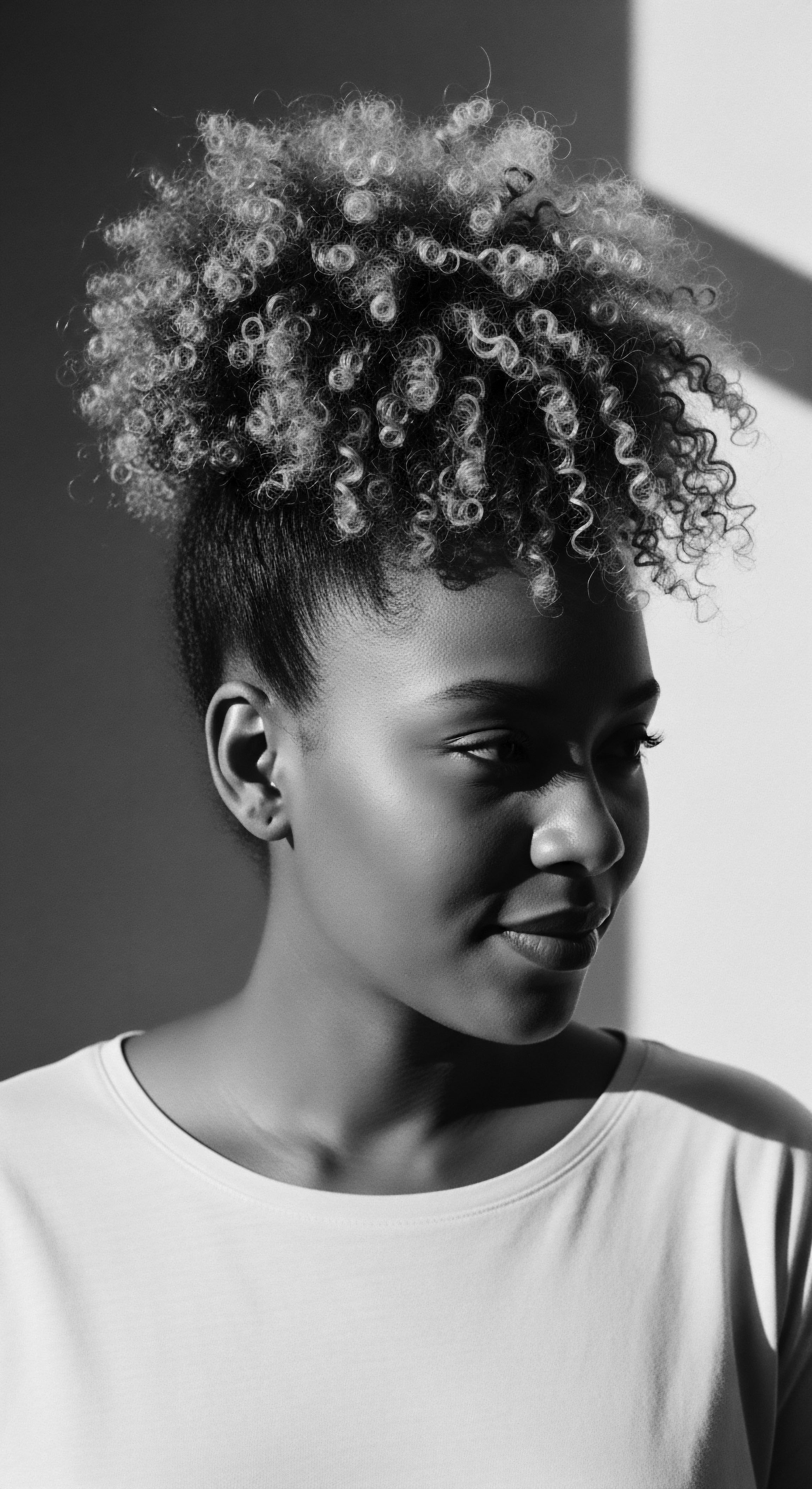
Fundamentals
The very concept of mechanical stress, when viewed through the lens of textured hair, resonates with an ancestral understanding of force and fragility. At its simplest, mechanical stress signifies the physical forces exerted upon an object, prompting a change in its shape, structure, or state. For a single strand of hair, particularly one with the distinctive spirals and coils characteristic of Black and mixed-race hair, this translates to the push, pull, bend, twist, or friction it experiences. From the gentle caress of fingers to the deliberate movements of styling tools, every interaction introduces a degree of mechanical stress.
The intrinsic resilience of a hair strand, born from its unique protein architecture, determines its capacity to withstand these pressures before succumbing to strain or eventual breakage. It is a fundamental interplay between external action and internal fortitude.
Within the realm of textured hair care, recognizing mechanical stress is the initial step toward safeguarding its delicate yet strong nature. Hair, a biological fiber composed primarily of keratin, possesses viscoelastic properties, meaning it exhibits both elastic and viscous characteristics. When stretched or twisted, it deforms, but over time, it may recover its original shape, or it might permanently alter if the stress exceeds its elastic limit. The tighter the coil, the more points of curvature exist along the strand, rendering these natural bends potential sites of weakness, where mechanical forces concentrate.
This unique morphology implies that methods of styling, detangling, and even sleeping, which might be innocuous for straighter hair types, demand a thoughtful, tender approach for coiled textures. Understanding this foundational principle allows for a conscious engagement with hair, moving beyond mere aesthetics to practices that honor its inherent structure and preserve its vitality across generations.
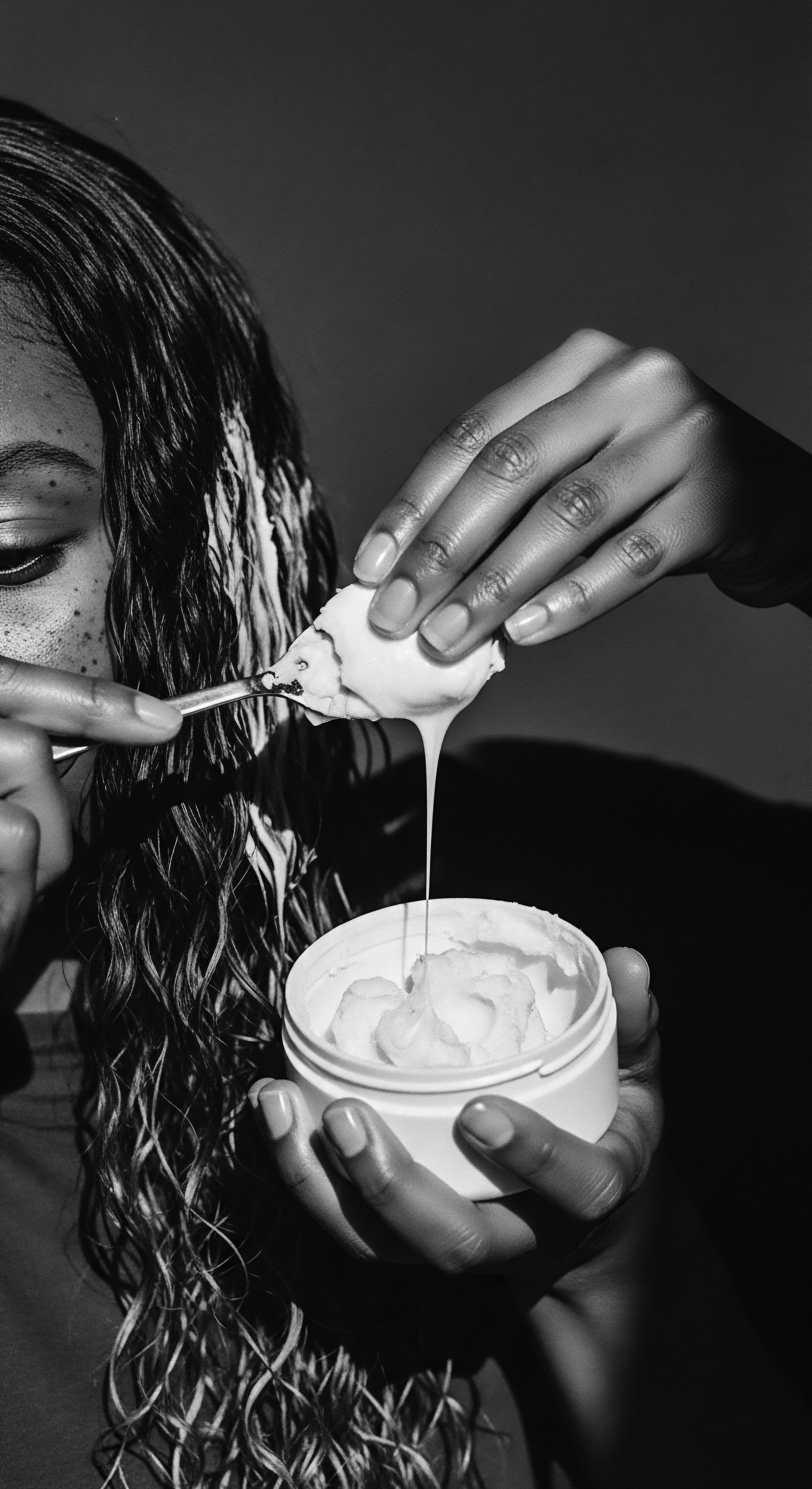
The Whispers of Applied Force
The earliest human interactions with hair, stretching back to the dawn of ancestral traditions, instinctively recognized the impact of external forces. Mechanical stress manifests in daily practices, even those seemingly innocuous. Think of the resistance encountered during detangling, the tension created by a tightly wound braid, or the persistent friction against fabrics. Each of these actions applies a force to the hair shaft.
How that force is distributed, how long it persists, and how frequently it occurs collectively determine the cumulative effect. The very definition of mechanical stress becomes tangible in these moments, illustrating the precise physics governing hair’s physical integrity. It is an understanding that, while now articulated scientifically, was long held as intuitive wisdom within communities where hair care was a sacred, communal act.
Consider the simple act of combing. For a strand of hair with a relaxed curl pattern, a comb glides with minimal resistance. For a tightly coiling strand, however, the comb must navigate a complex landscape of twists and turns, often encountering significant drag. This resistance is a direct form of mechanical stress.
Repeatedly forcing a comb through dry, tangled hair can lead to localized points of excessive strain, causing the hair cuticle, the outermost protective layer, to lift or fracture. This opening of the cuticle then exposes the inner cortex, making the strand susceptible to further damage and moisture loss. The knowledge of this vulnerability, even without modern scientific terminology, guided ancestral practices that emphasized gentle handling and careful preparation before any manipulation.
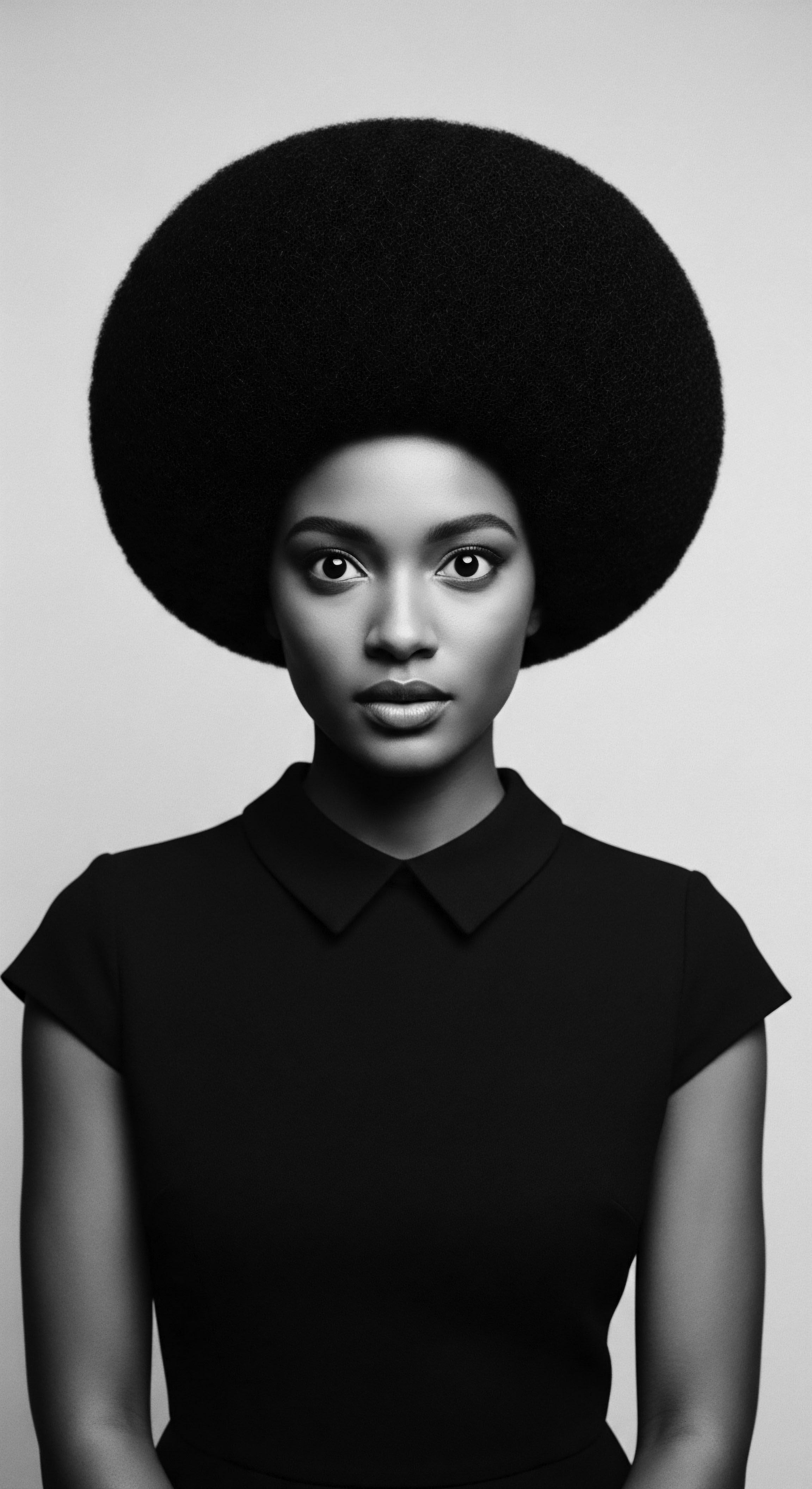
Intermediate
Stepping deeper into the understanding of mechanical stress, its meaning evolves beyond a simple application of force; it speaks to the intricate dance between hair’s inherent structure and the external demands placed upon it. For textured hair, this conversation is particularly pertinent. The distinct helical nature of coily and kinky strands means they are inherently more susceptible to mechanical forces.
Each curl and bend represents a potential stress riser, a point where tension can concentrate, increasing the likelihood of breakage compared to straighter hair types. The very essence of mechanical stress, then, lies in how these external pressures interact with hair’s unique morphology, determining its long-term health and resilience.
The significance of recognizing mechanical stress for textured hair extends into the historical and cultural practices that have shaped hair care traditions. For generations, Black and mixed-race communities have developed sophisticated techniques to mitigate these forces, often without formal scientific explanation. These practices, passed down through oral traditions and communal rituals, represent an embodied knowledge of hair mechanics.
From intricate braiding methods to the use of specific oils and butters, the ancestral approach instinctively understood that gentleness and protection were paramount. The hair’s ancestral journey from its origins to present-day care reflects this profound understanding, often highlighting the need to minimize tension and friction to preserve the hair’s integrity.
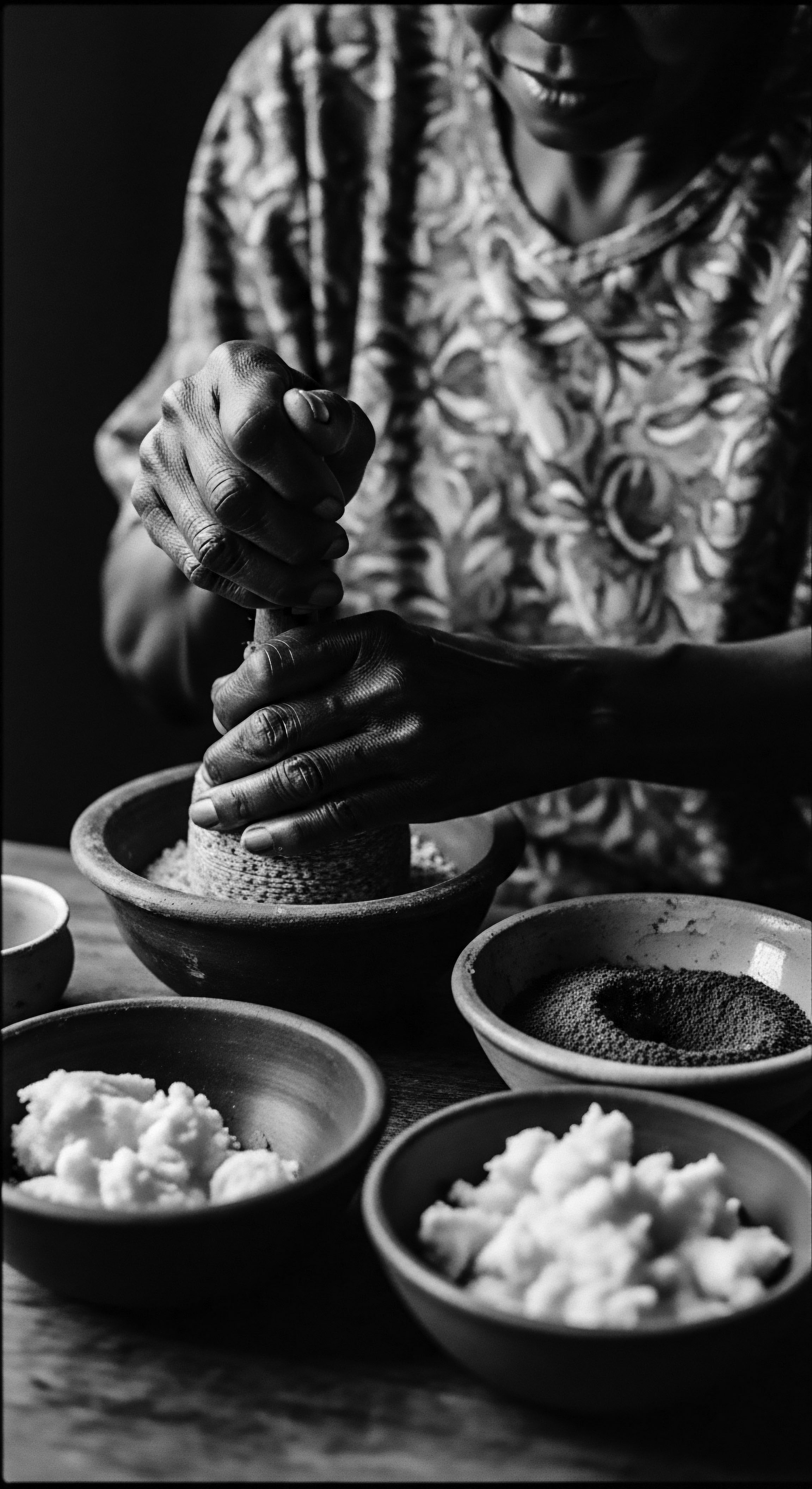
The Tender Thread of Ancestral Care
The application of mechanical stress in daily hair practices, particularly within the continuum of textured hair heritage, reveals a fascinating interplay of historical necessity and ingenious adaptation. Ancient communities, across various African societies, cultivated hair care routines that instinctively minimized damaging forces. Before the transatlantic slave trade, for instance, detailed and communal hair styling practices were common, often involving hours of careful manipulation that simultaneously served as social bonding opportunities (Dermatologist, 2023). These elaborate processes, such as the intricate techniques of the Yoruba people of Nigeria, who considered the hair as sacred as the head, included washing, oiling, and braiding, executed with a deliberate touch that would inherently reduce harsh mechanical stress (Afriklens, 2024; EdwardAsare, 2021).
The systematic removal of ancestral tools, traditional oils, and the collective time for care during slavery meant enslaved Africans lost the very means to mitigate mechanical stress, resulting in matted, tangled, and damaged hair (Dermatologist, 2023). This historical rupture starkly illuminates the protective power of traditional practices in safeguarding hair against undue mechanical pressures.
Understanding the dynamics of friction and tension is central to grasping mechanical stress. When hair strands rub against each other, against clothing, or against styling tools, friction generates wear and tear, leading to cuticle damage and eventually breakage. Tension, the pulling force, arises from tight styles like braids, twists, or ponytails.
While many traditional styles were designed to protect hair, improper installation or excessive tightness could inadvertently induce traction alopecia, a form of hair loss caused by chronic pulling on the follicles (StatPearls, 2025). The evolution of hair care within the diaspora has often been a journey of adapting ancestral methods to new environments, sometimes with unintended consequences due to the loss of intergenerational knowledge or the imposition of Eurocentric beauty standards that necessitated practices, such as chemical relaxers or excessive heat, which exacerbated mechanical vulnerabilities (Dermatologist, 2023; Odele Beauty, 2021).
Ancestral hair practices, particularly the communal rituals of oiling and braiding, inherently mitigated mechanical stress, a wisdom lost during the transatlantic slave trade.
This historical context underscores the ethical considerations embedded in modern hair care. The push towards embracing natural textured hair in recent decades reflects a conscious movement to reduce reliance on practices that inflict high mechanical and chemical stress. It is a reclamation of ancestral wisdom, advocating for gentler methods that honor hair’s natural state and enhance its resilience.
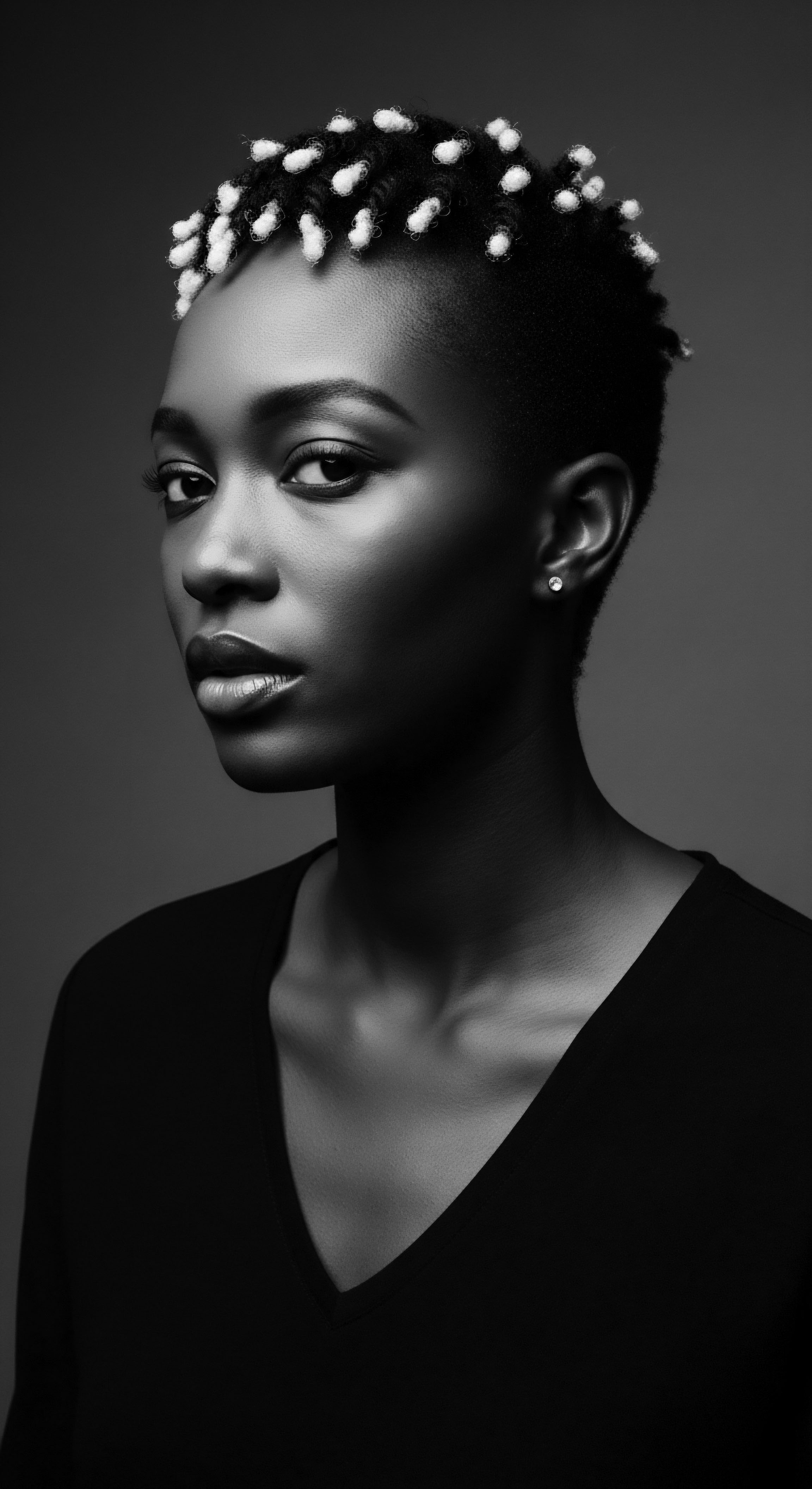
A Study in Resilience ❉ Hair Morphology and Its Response
The micro-structural characteristics of textured hair play a pivotal role in its response to mechanical stress. Unlike straight hair, which typically has a circular cross-section, coiled hair often exhibits an elliptical cross-section and numerous twists along its length (ResearchGate, 2024). These structural nuances contribute to its volume and unique appearance, but they also make it more susceptible to certain types of mechanical damage.
When force is applied, the stress is not evenly distributed along the tightly coiled strand; instead, it concentrates at the points of curvature, the very bends that define its texture. This phenomenon explains why detangling dry, tightly coiled hair can be particularly damaging, as the comb or fingers exert localized forces at these vulnerable points. The continuous intertwining of strands in coily hair also increases internal friction, especially during movement or manipulation.
- Hair Shape and Stress Distribution ❉ The elliptical cross-section and twisted nature of textured hair lead to uneven stress distribution, concentrating forces at the curves.
- Cuticle Integrity ❉ Mechanical forces, particularly friction, can lift and damage the hair’s cuticle, the outermost protective layer, exposing the inner cortex to environmental factors.
- Moisture Content ❉ Well-moisturized hair is more pliable and elastic, allowing it to better absorb and dissipate mechanical stress, reducing the likelihood of breakage.
- Fiber Weakness ❉ Prolonged or excessive mechanical stress can cause structural fatigue, leading to irreversible damage such as fractures, split ends, or even complete breakage of the hair shaft.
Furthermore, African hair is naturally drier than other hair types due to its coiled structure, which makes it difficult for natural scalp oils to travel down the hair shaft (Ethnetics). This natural dryness exacerbates the hair’s vulnerability to mechanical stress, as dry hair is more rigid and less capable of deforming without breaking. Therefore, historical and traditional practices that emphasized regular oiling and moisturizing were not merely cosmetic; they were crucial preventative measures against mechanical damage, deeply rooted in an intuitive understanding of hair biology.
| Tool/Practice Fingers/Wide-tooth Combs |
| Ancestral Context (Pre-Colonial) Used gently, often with oils, for detangling and styling, minimizing snagging. Communal grooming was common, fostering patience. |
| Contemporary Relevance to Mechanical Stress Emphasized as the gentlest approach to minimize pulling and friction, especially on wet, conditioned hair. |
| Tool/Practice Natural Oils & Butters (Shea, Castor, Marula) |
| Ancestral Context (Pre-Colonial) Applied regularly to soften, moisturize, and provide slip, facilitating detangling and reducing friction. |
| Contemporary Relevance to Mechanical Stress Scientifically recognized for reducing the coefficient of friction, sealing cuticles, and increasing elasticity, thus protecting against mechanical wear. |
| Tool/Practice Braids & Twists (as protective styles) |
| Ancestral Context (Pre-Colonial) Designed to protect hair from environmental elements and reduce daily manipulation, minimizing exposure to mechanical forces. |
| Contemporary Relevance to Mechanical Stress Can be beneficial when installed loosely to avoid tension alopecia; improper tightness or prolonged wear can cause severe mechanical stress at the root. |
| Tool/Practice Hair Threading (Irun Kiko) |
| Ancestral Context (Pre-Colonial) Yoruba practice using thread to stretch hair, offering protection and length retention. |
| Contemporary Relevance to Mechanical Stress A low-tension method of elongation that minimizes direct heat and chemical exposure, reducing heat- and chemically-induced mechanical damage. |
| Tool/Practice These traditional practices, often guided by collective wisdom, offer invaluable insights into managing mechanical stress for textured hair, underscoring the enduring significance of gentle care. |
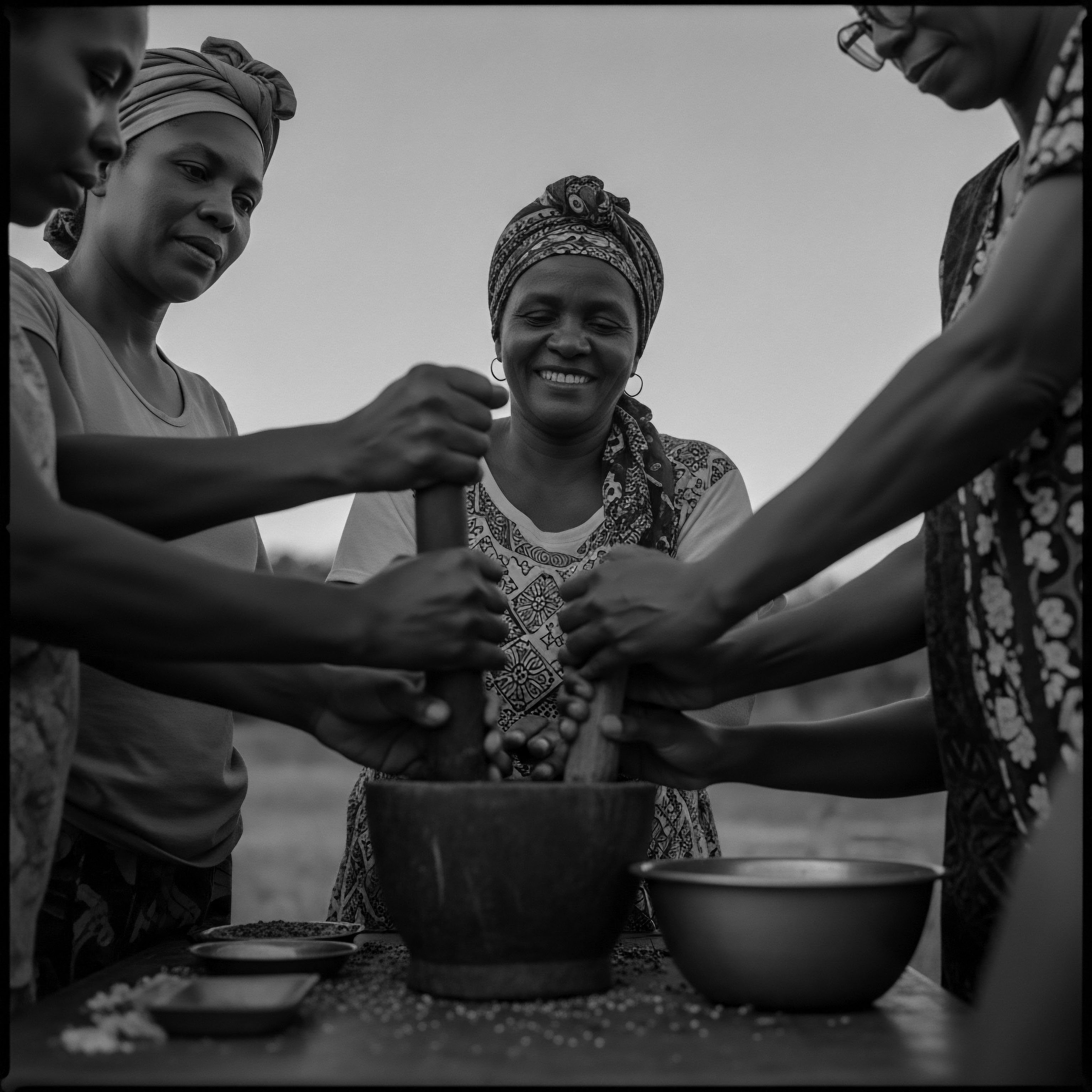
Academic
The academic elucidation of mechanical stress on textured hair demands a nuanced understanding of its biophysical properties, alongside a profound appreciation for the socio-historical forces that have shaped its vulnerability. Mechanical stress, in an academic sense, refers to the internal resistive forces within a material generated in response to external forces, measured as force per unit area. For hair, this translates to the tension, compression, shear, and torsion experienced by the keratin fibers and their surrounding structures.
The meaning of this term, specifically for hair of African descent, encompasses the unique challenges posed by its morphology—characterized by tight, elliptical coils and irregular cross-sections—which contribute to greater fragility and susceptibility to mechanical damage at various points along the fiber (ResearchGate, 2024; Ethnetics). This structural predisposition means textured hair fibers are inherently more prone to breakage when subjected to common styling and manipulation forces, a reality often compounded by historical and cultural practices.
The full complexity of mechanical stress on textured hair lies in the dynamic interplay between its intrinsic biomechanical response and the extrinsic factors of styling, environmental exposure, and even societal pressures. When hair is subjected to mechanical forces, such as combing or stretching, the stress is transmitted through the hair shaft. For coily hair, the stress concentration occurs at the bends and twists, which act as stress risers, making these regions particularly vulnerable to fracture (ResearchGate, 2024). This understanding forms the bedrock of specialized hair science, moving beyond simplistic explanations to acknowledge the intricate physics governing hair’s behavior.
Furthermore, the hair follicle itself, where the strand originates, can experience significant mechanical strain from tight hairstyles, potentially leading to follicular damage and hair loss conditions such as traction alopecia (StatPearls, 2025). The exploration of this phenomenon, therefore, necessitates a multidisciplinary approach, drawing insights from material science, dermatology, and cultural anthropology to fully grasp its implications.
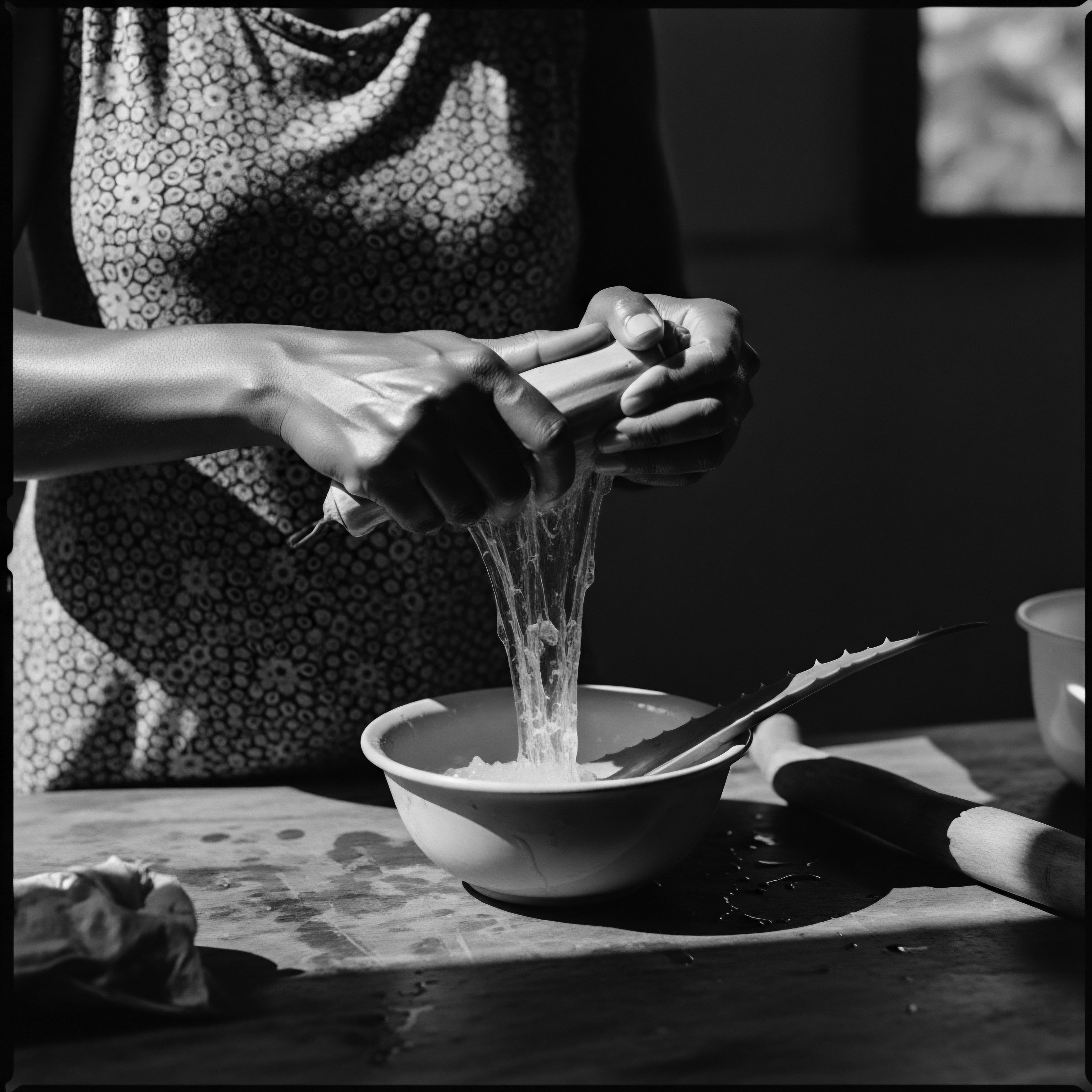
The Geometry of Vulnerability ❉ Hair Structure and Force Dynamics
The fundamental definition of mechanical stress, when applied to the unique architecture of Afro-textured hair, reveals a profound relationship between form and function. Hair’s morphology, particularly its characteristic coiling, introduces inherent vulnerabilities. The elliptical cross-sectional shape and the presence of numerous twists and turns along the hair shaft mean that when a pulling or stretching force is applied, the stress is not uniformly distributed. Instead, it concentrates at the sharp bends and curves of the coil.
These localized areas of intense stress are where the fiber’s integrity is most tested, increasing the probability of fracture or breakage under tension (ResearchGate, 2024). The scientific understanding of this phenomenon allows us to explain why detangling, for instance, must be approached with utmost care for coily hair.
Beyond the hair shaft itself, the follicular unit experiences significant mechanical strain. Hairstyles that involve tight pulling, such as cornrows or braids, exert continuous tension on the hair follicle, potentially leading to inflammation, follicular miniaturization, and, in chronic cases, scarring alopecia. Research indicates that traction alopecia is disproportionately common among women of African descent due to the frequent use of tension-inducing hairstyles (StatPearls, 2025).
A study focusing on Ghanaian African females noted that hairstyling methods like braiding, weaving, and heat-styling can alter the microscopic profile of West African Negroid hair, weakening it by affecting disulfide bonds, which are critical for hair strength (ResearchGate, 2019). This highlights the dual nature of protective styles ❉ while offering benefits against environmental factors, their improper application can become a significant source of mechanical stress.
The unique morphology of coily hair, with its elliptical cross-section and numerous twists, creates points of concentrated mechanical stress, increasing its inherent vulnerability to breakage.
The meaning of mechanical stress, therefore, is not merely a description of applied force; it is an interpretation of how these forces interact with the very biological essence of textured hair, influencing its tensile strength, elasticity, and overall health. This analytical depth, drawing upon empirical data and biophysical models, provides a comprehensive framework for understanding the mechanisms of damage and, consequently, for developing genuinely protective hair care strategies.
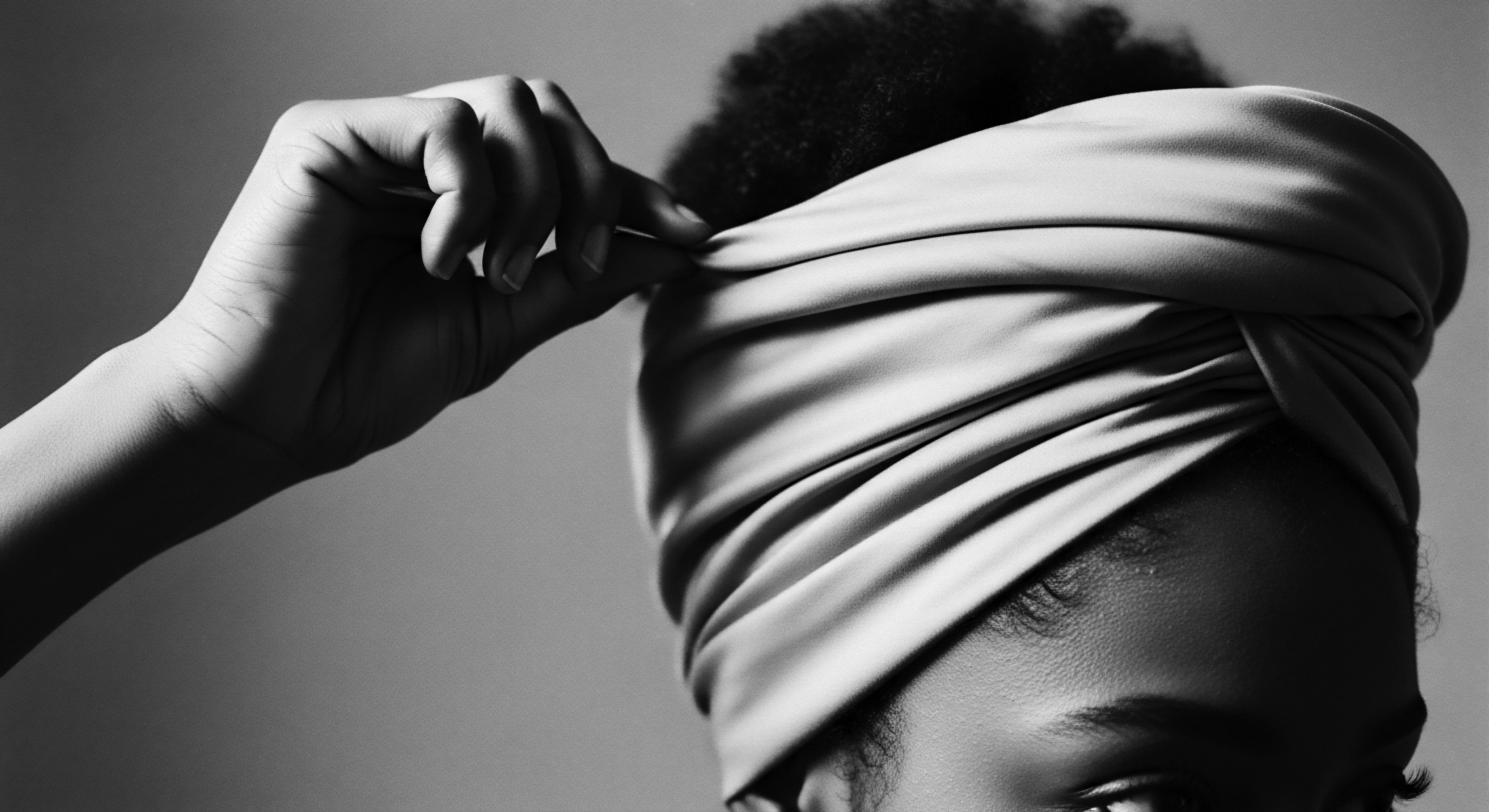
Echoes from the Source ❉ Ancestral Ingenuity in Mitigating Mechanical Strain
A truly comprehensive understanding of mechanical stress on textured hair must reach back to the ancestral practices that predate contemporary scientific nomenclature. Long before laboratories defined stress-strain curves, communities across Africa intuitively grasped the principles of hair preservation. Their methods, often intertwined with spiritual beliefs and social rituals, were highly sophisticated in minimizing mechanical damage.
For instance, the regular practice of oiling the scalp and hair with indigenous plant extracts—such as shea butter, castor oil, and marula oil—was not simply for aesthetic sheen (Substack, 2025; Ancestor Hair Oil; Raw African’s Beauty Hub; YouTube, 2020). These emollients provided a crucial layer of slip, reducing friction during manipulation and detangling. The enhanced lubricity lowered the coefficient of friction between hair strands and external objects, thereby diminishing the shearing forces that cause cuticle damage and breakage. This preventative measure, rooted in ethnobotanical wisdom, stands as a testament to an ancestral understanding of hair’s physical vulnerability (ResearchGate, 2024).
A particularly illuminating example of ancestral ingenuity in mitigating mechanical stress, often overlooked in mainstream hair science discussions, is the historical application of Chébé Powder by the Bassara/Baggara Arab tribe in Chad. Sourced from the seeds of the Chébé plant, this finely ground powder, mixed with water into a paste, was applied to the hair to achieve remarkable length and strength (Ancient Gems, 2024). While its precise chemical mechanisms are still being explored, the traditional method of application involved saturating the hair with this paste and then braiding it. This practice served multiple critical functions in relation to mechanical stress:
- Lubrication and Reduced Friction ❉ The paste itself, rich in natural compounds, likely provided a coating that reduced inter-fiber friction, allowing strands to glide past each other more smoothly during braiding and subsequent wear.
- Increased Hair Suppleness ❉ Ingredients within the Chébé mixture could have contributed to the hair’s elasticity and pliability, making it less prone to fracture under tensile stress.
- Encapsulation and Protection ❉ By encasing the hair strands within the paste and then braiding, the hair was effectively protected from external abrasive forces and environmental stressors that induce mechanical damage. This acts as a physical barrier.
- Structural Reinforcement ❉ The adherence of the paste to the hair shaft might have temporarily increased its diameter or provided a localized stiffening effect, enhancing its resistance to bending and torsional forces.
The ritualistic application of Chébé powder, alongside practices like African Hair Threading (Irun Kiko among the Yoruba), which involved wrapping hair with thread to stretch and protect it from breakage (Ancient Gems, 2024), represents a sophisticated ancestral technology designed to minimize the very mechanical stressors that modern science now categorizes. These practices not only served an aesthetic purpose but were deeply functional, allowing for the long-term health and growth of hair in challenging climates and conditions. The cultural significance of such practices, often performed communally, reinforced the idea that hair care was an integral part of holistic well-being, connecting individuals to their lineage and safeguarding a physical manifestation of their identity.
This ancestral wisdom stands in stark contrast to the period of forced assimilation and the introduction of damaging practices during and after slavery. As documented, slave traders often shaved the heads of enslaved Africans to strip them of identity (Dermatologist, 2023). When hair grew back, the absence of traditional tools, ingredients, and communal care led to matted, damaged hair (Dermatologist, 2023).
The subsequent pressure to conform to Eurocentric beauty standards, which often entailed chemical relaxers and hot combs, introduced extreme forms of mechanical and chemical stress, irrevocably altering hair structures and leading to widespread issues like central centrifugal cicatricial alopecia (CCCA) and traction alopecia (Dermatologist, 2023; Aglow Dermatology, 2024; Wikipedia, 2025). This historical journey underscores the critical insight that while modern science provides the vocabulary for mechanical stress, ancestral practices provided the blueprint for its mitigation, a wisdom that continues to guide natural hair movements today.

Reflection on the Heritage of Mechanical Stress
As we close this contemplation on mechanical stress, particularly as it pertains to textured hair, we find ourselves tracing a circle back to the very soul of a strand. The journey through its fundamental definition, its intermediate complexities, and its academic intricacies has consistently revealed a profound truth ❉ hair, especially coiled hair, holds stories. Its susceptibility to mechanical forces, its resilience against them, and the ancient wisdom developed to protect it are all deeply woven into the heritage of Black and mixed-race communities.
From the communal detangling rituals of ancient villages, where fingers and wide-tooth combs moved with patient grace, to the deliberate application of rich, nourishing oils like shea butter and marula, ancestral practices were, at their heart, a tender dialogue with mechanical stress. These were not merely acts of grooming; they were acts of preservation, of identity, and of passing down a legacy of self-care. The very act of braiding, for instance, historically served as a protective shield against the elements and daily wear, implicitly understanding the delicate balance between securing strands and inflicting undue tension. The wisdom of our foremothers knew, without needing scientific terms, that gentle care was the sacred pathway to length and vitality.
The modern understanding of mechanical stress, then, becomes a powerful affirmation of this enduring ancestral knowledge. When contemporary research validates the efficacy of reducing friction through emollients or designing low-tension styles, it does more than just present data; it echoes the soft whispers of grandmothers across generations. The journey of textured hair through eras of oppression and reclamation, from forced shaving to the proud embrace of natural coils, reflects a continuous negotiation with external pressures—both physical and societal.
Understanding mechanical stress in this context allows us to honor the past, to heal from historical damages, and to consciously shape a future where every strand is treated not just as a fiber, but as a living archive of heritage and resilience. The health of textured hair is inextricably linked to this understanding, inviting us to treat each curl with reverence, acknowledging its enduring strength and the deep, abiding narratives it carries.
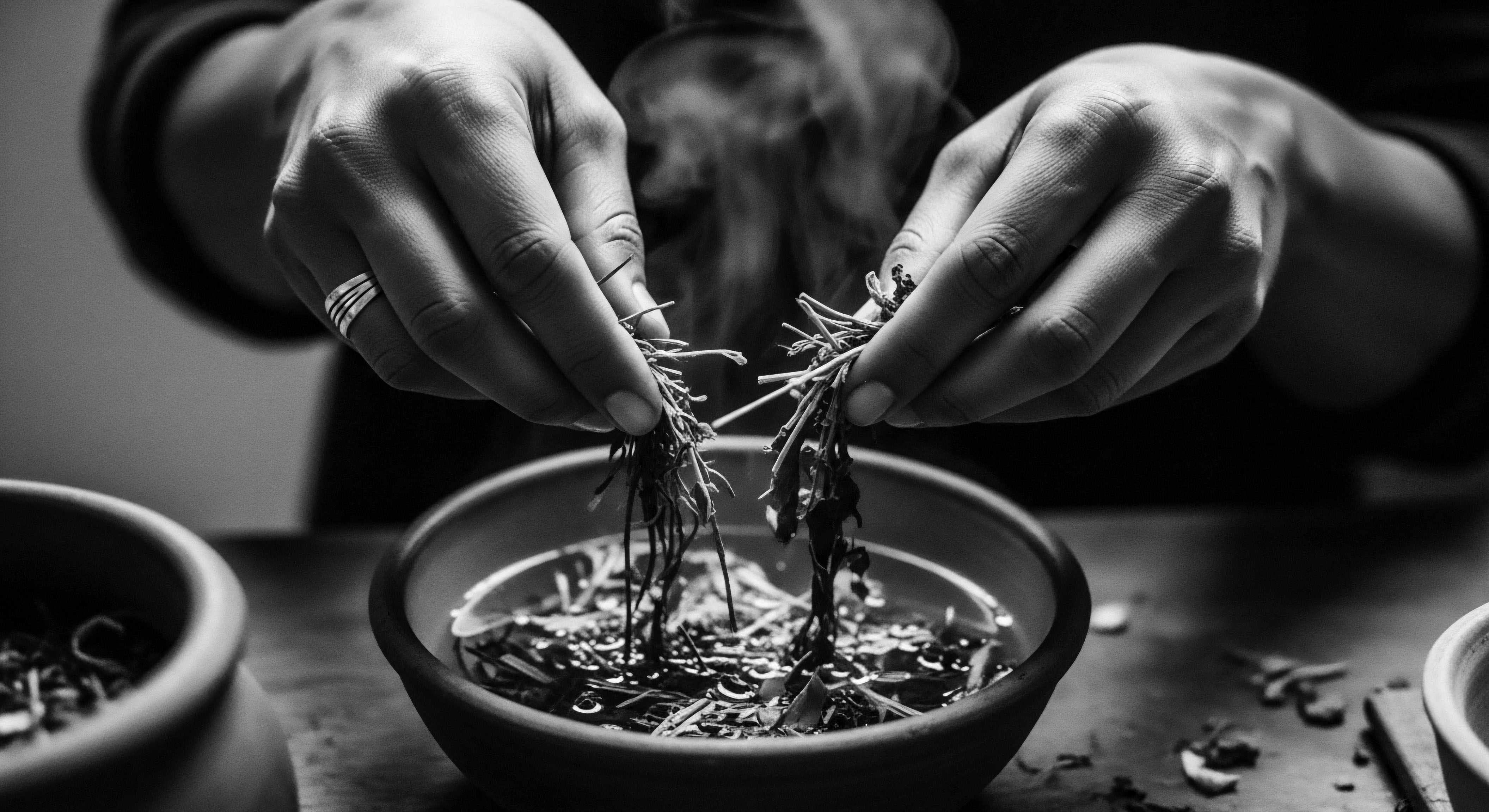
References
- Afriklens. (2024). African Hairstyles ❉ Cultural Significance and Legacy.
- Aglow Dermatology. (2024). African American hair loss – what can be done?
- Ancestor Hair Oil. (n.d.). Ancestor Hair Oil.
- Ancient Gems. (2024). Ancient Gems ❉ A Historical Survey of African Beauty Techniques.
- Dermatologist, What Every. (2023). What Every Dermatologist Must Know About the History of Black Hair.
- EdwardAsare. (2021). THE ROLE OF HAIR IN ANCIENT AFRICAN CULTURES.
- Ethnetics. (n.d.). Anatomy of African Hair.
- Odele Beauty. (2021). 6 Things Everyone Should Know About Black Hair History.
- Raw African’s Beauty Hub. (n.d.). Hair Follicle Booster Oil.
- ResearchGate. (2019). Microscopic Characteristics Of Scalp Hair Subjected To Cultural Styling Methods In Ghanaian African Females.
- ResearchGate. (2024). African hair morphology ❉ Macrostructure to ultrastructure.
- StatPearls. (2025). Traction Alopecia.
- Substack. (2025). Ancestral Hair Rituals to Nourish Your Hair and Soul.
- Wikipedia. (2025). Traction alopecia.
- YouTube. (2020). Ancient AFRICAN Hair Growth Secrets to EASILY grow long Natural hair.
